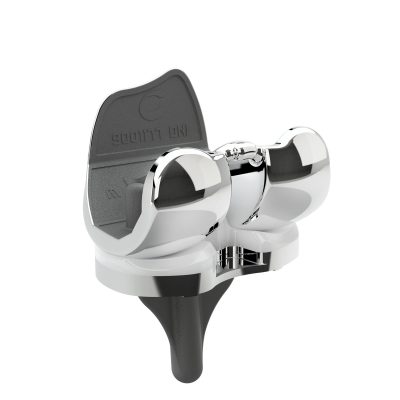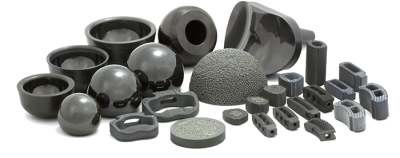Lots is happening in the healthcare area and it’s clear that the orthopaedic fee-for-value space will continue to evolve in 2019. Here are some insights from three speakers the 3rd Interdisciplinary Conference on Orthopedic Value based Care taking place on January 18-20, 2018 in beautiful Newport Beach, California.
Alexander R. Vaccaro, MD, PhD, MBA
Richard H. Rothman Professor and Chairman of Orthopedic Surgery
President, Rothman Orthopedic Institute
- Can you share your best advice for motivating your teams?
Make sure they clearly understand goals and objective of any initiatives and have the opportunity for feedback and buy in. Show that you care about them and their opinions, be humble, celebrate/ recognize/ reward small and large wins, roll up your sleeves.
- How do you break the silos in your organization?
Communicate , Communicate, Communicate. Reward the Mngt team based on team goals/ targets so that it incentives to work “across lines/ departments”. Have each leader “walk in the other’s shoes” so they get a better understanding of the position, responsibilities, problems / issues, work product. Constantly motivate, meet as a leadership team often, teak the team to dinner/ drinks – get to know each other personally.
- OP Surgery is moving to the outpatient area; how do you get ready for it?
Develop OP ASC’s (we now have 8 – and will got up to 12-14 with Northern Jersey and NY). Larger OR’s and PACU bays ; risk assessment all patients for appropriateness of care, visit existing ASC’s that are performing Spine/ Joints on an OP basis. Define specific criteria for cases qualifying for OP ASC. Ensure that the OR’s are big enough.
AnnMargaret McCraw
Chief Executive Officer
Midlands Orthopaedics & Neurosurgery, PA
What’s the best thing you’ve read lately?
The Ideal Team Player by Patrick Lencioni | What Customers Crave by Nicholas Webb | Start With Why by Simon Sinek (not a recent read, but my “go-to” leadership philosophy)
How do you promote innovation within your organization?
Promoting innovation is easier to do when you’re the only private ortho-neuro group left in your MSA of 750,000 people, and you’re surrounded by 45 hospital-employed orthopaedists and 11 hospital-employed neurosurgeons – our survival literally depends on it. We first disrupted our market in 2012 when BCBS SC began to cover outpatient joint replacements in our ASC. Soon after, we began adding spine procedures. The average cost-savings is 15k-$40k per total joint replacement based on the average claims paid by BCBS SC to 3 hospital systems in the area per their own Treatment Cost Estimator. This distinction as the lowest cost surgical provider for complex ortho/spine procedures coupled with excellent outcomes has become our identity. Of course, once you have disrupted a market, you must continue to innovate or be disrupted by the competitors who are always nipping at your heels. To continue thriving, the innovation cycle must become part of the organization’s culture.
In the past 12 months, how have you adapted to new patient experience expectations in the age of consumerism?
What Customers Crave by Nicholas Webb is a great resource for this issue. In the previous 12 months, we have focused on reducing the amount of information we’re collecting at the front desk to enhance the intake process; we have initiated an internalPAINLESS (Patients are in Need. Lead Employees Share Solutions.) campaign; and we are in the process of implementing a scheduling platform that will allow patients to self-schedule via an app by Q4 2018.
Scott Sigman, MD
Orthopedic Surgery
National Leader in Opioid Sparing Orthopedic Surgery
Orthopedic Surgical Associates
How Do You Break Silos In Your Organization?
Specifically, within orthopedics with the use of more expensive non-opioid medications, we found that pharmacy silos give us severe limitation in the ability to use these medications at a number of hospitals across the country. Our focus has been to try and carve out the use of these medications, so that insurance companies will pay for these medications outside of the typical DRG or payment for an individual surgery. We did this specifically by lobbying congress as well as CMS, both in person in Washington, D.C. as well as through letter writing campaigns. We were fortunate to hear that as of January 1st some of these changes will be implemented going forwards through CMS.
In the past 12 months, how have you adapted to new patient experience expectations in the age of consumerism?
I am a huge believer in social media. I have postings on Linkedin for my business
friends. I am also on Facebook for my older population of patients as well as Instagram for my younger population of patients. I remain connected with my patients. With these avenues, we can express the latest state of the art techniques that we are performing and in engaging patients directly, we have found that we have great success.
Surgeries moving to the outpatient area. How do you get ready for it?
This has been the natural progression for us in the opioid sparing space. We are now successfully operating on patients near opioid free, which opens up the realm of possibility for outpatient surgery for even more extensive operations such as total hip and knee replacements as well as outpatient spine surgery. The patient expectations as well as patient selection I think are paramount to make sure that you have the best chance of success for patient experience.





